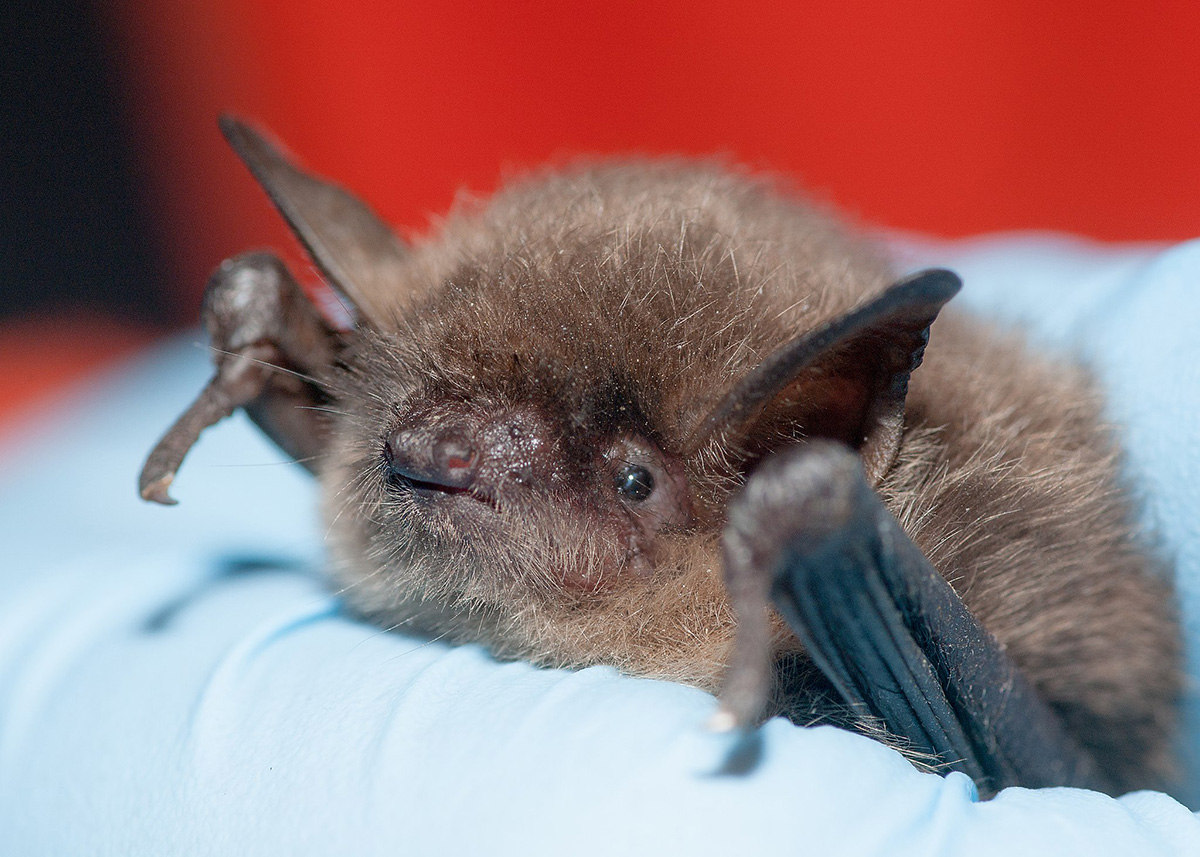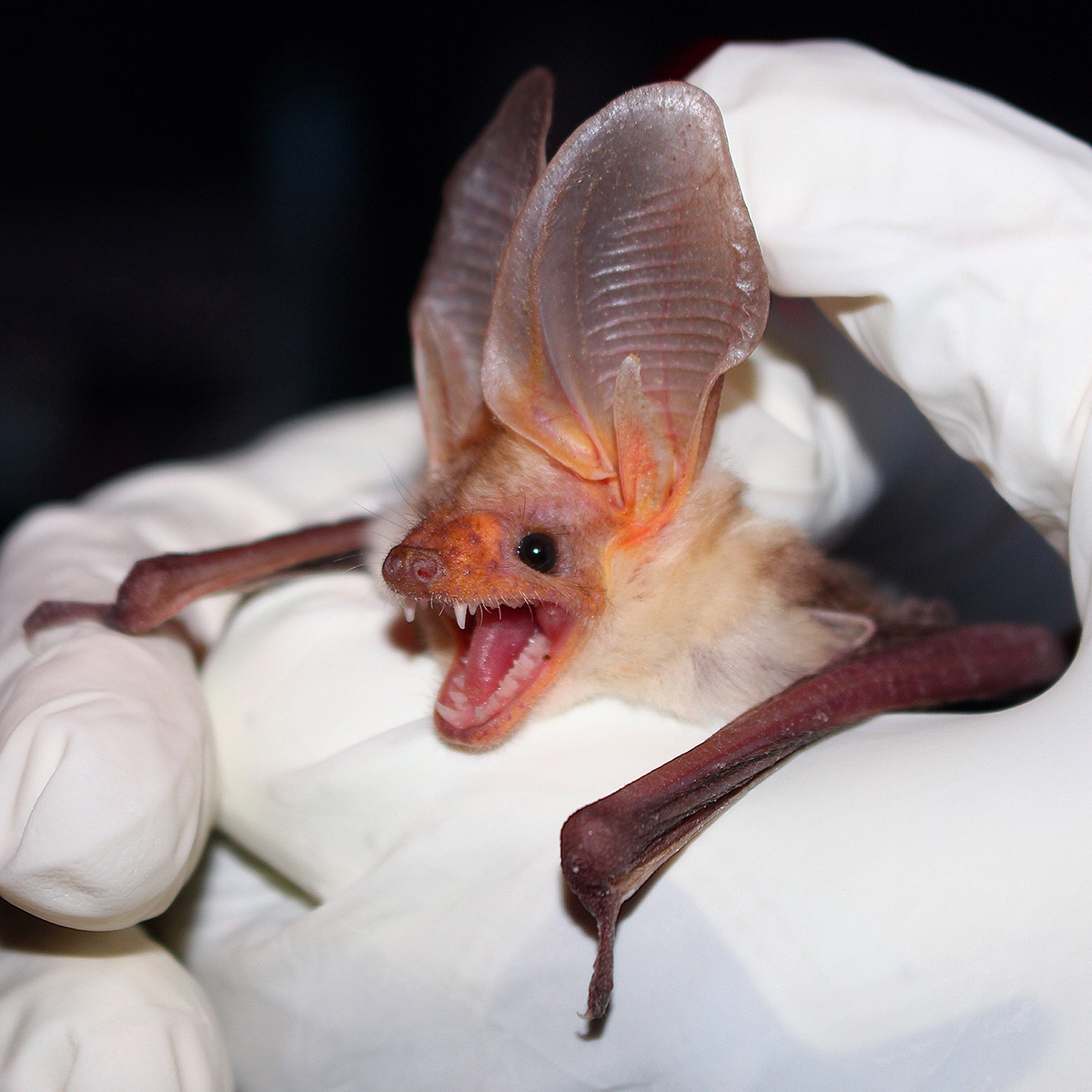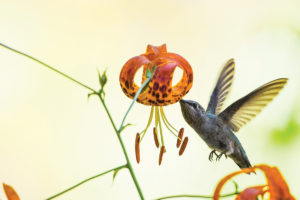Eight bat species can be found in the East Bay Regional Park District. Here are three of the most interesting.
Yuma myotis (Myotis yumanensis)

Common in East Bay parks, these mouse-eared bats live in large colonies. They depend on ponds and lakes, such as the reservoir at Del Valle Regional Park, where they can snatch smaller insects off the water’s surface.
Pallid bat (Antrozous pallidus)

With a pig-like snout and a 15-inch wingspan, pallid bats swoop low and slow over the ground, looking for hard-shelled prey like crickets and scorpions. Highly susceptible to roost abandonment and light pollution, the pallid bat has been designated a species of special concern, and there’s a movement to list it as California’s state bat.
Townsend’s big-eared bat (Corynorhinus townsendii)

Identified by its inch-long ears, this bat is known as the whisper bat because it echolocates at low, almost undetectable frequencies to sneak up on moths and other prey. Another state species of special concern, it tends to abandon its roosts in caves, mines, or old buildings when humans intrude.




